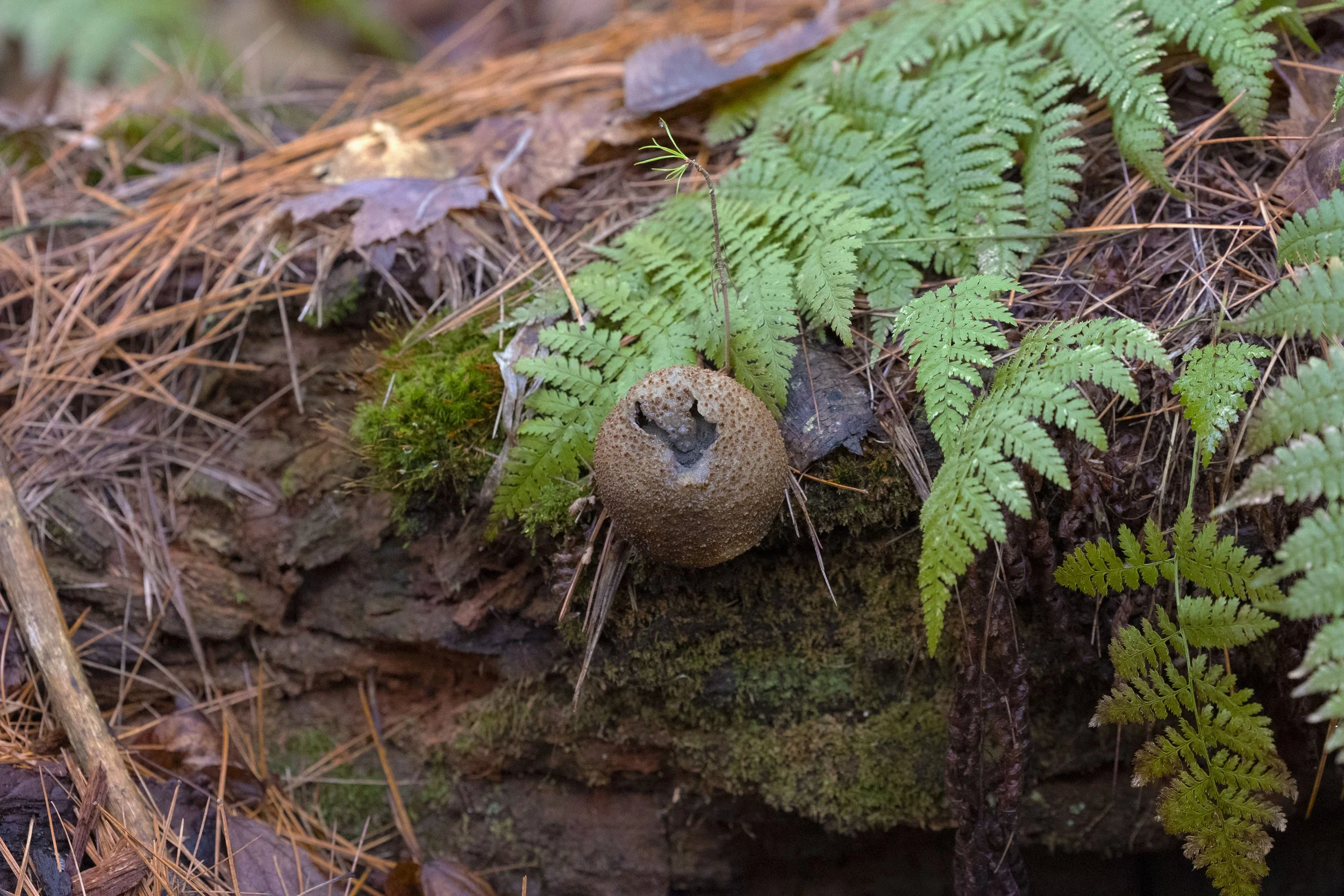Pierpont Meadow Wildlife Sanctuary
This wildlife sanctuary is a Mass Audubon Society sanctuary located in Dudley, MA on former farmland. At one point it was entirely cleared for agriculture but has since regrown. Stone walls still stand amidst pine groves and along the edge of meadows as a reminder of the past. The sanctuary protects valuable shrub-land that provides a nesting habitat for a number of declining bird species such as the Brown Thrasher and Eastern Towhee.
Amber Jelly Roll (Exidia Recisa)
Amber Jelly Roll is a wood rotting jelly fungus that is common and widely distributed across the northern hemisphere. It tends to be more abundant in cool damp (predominantly northern) climates and particularly near rivers lakes and other sources of humid air. It’s mainly a winter fungus that lives on dead twigs of standing or fallen willows (and very occasionally other hardwoods). It’s also edible best used in soups and salads.
Wolfs Milk (Lycogala Epidendrum)
Also known as groening's slime, Wolfs Milk is a type of slime mold with small (0.12–0.59 in (3-15mm) in diameter) ball or cushion shape fruiting bodies. The fruiting bodies occur either scattered or in groups on damp rotten wood, especially large logs. It varies greatly in color depending on its’ age starting as a greyish-pink when immature and transitioning to a yellowish-brown or greenish-black as it ages. The cushion has a rough to warty texture and releases a pinkish-grey paste-like flesh when popped. This flesh, which contains spores, turns powdery and ochre brown in color with time.
Birch Polypore (Piptoporus Betulinus)
Birch Polypore is a common white bracket fungus that, true to its name, only grows on dead or damaged birch trees. It can be seen as a parasite to the tree slowly killing it and living on it for many years until the tree is rotted to nothing. Although they aren’t normally eaten, they have been used for thousands of years for their medicinal properties as an anti-bacterial, anti-viral, anti-inflammatory and immune booster. The mushroom has beneficial effects on the immune system and many people drink a tea made from the fresh or dried fungi and swear by its positive effects.
Crowded Parchment (Stereum Complicatum)
Crowded Parchment is a common, widely distributed, wood decaying, bracket fungi. It is saprobic, occurring on stumps, logs, and sticks of hardwood trees, especially oak. It appears as fused masses or dense, overlapping clusters that sometimes entirely encircle a branch. The fruiting body is often a thin, semicircular or fan-shaped, 0.18-0.75 in (.49-1.9 cm) wide bracket (cap). It’s leathery and pliant when moist and rigid and brittle when dry. It may be flat, wavy, or curved up at the sides in the shape of a sliced funnel.
Red Banded Polypore (Fomitopsis Pinicola)
Red Banded Polypore is a stem decay fungus common on dead or dying softwood and hardwood trees. It forms as perennial conks that are corky and shelflike. Its characteristic feature is a red-brown band near the white to cream colored edge. The cream-colored pore surface is where reproductive spores are released from. This fungus enters living trees with airborne spores colonizing and infecting through wounds and broken tops. It may be introduced into dying or dead trees by insects, as it has been isolated from Douglas-fir bark beetles captured both in flight and from egg galleries.
Common Greenshield Lichen (Flavoparmelia Caperata)
Common Greenshield Lichen is a medium to large foliose lichen that has a very distinctive pale yellow green upper cortex when dry. It has rounded lobes, measuring 0.12-0.31 in (3-8 mm) wide, and these often have a wrinkled appearance, especially in older specimens, looking like molten wax. It grows on bark of deciduous trees and on other, generally base-poor, substrates like on rocks. Unlike most lichens, Greenshield lichens are relatively tolerant of air pollution. They are among the first noticeable lichens to return to areas that have been rid of lichens due to pollution.
Turkey Tail (Trametes Versicolor)
Turkey Tail Mushrooms are a common polypore mushroom found growing on dead hardwood throughout the world. They are a white-rot fungi which degrades lignin from lignocellulosic materials, such as wood. One of the most researched of all functional mushrooms, turkey tail is in a class of its own. It’s known in particular for its potent natural polysaccharides used for immune support. For centuries, people have used these mushrooms as a health supplement. In traditional Chinese medicine, people use turkey tail extract (Yun zhi) as a treatment for respiratory conditions.
Baltimore Oriole Nest
Baltimore Orioles build remarkable, sock-like hanging nests, woven together from slender fibers. The female weaves the nest, usually 3 -4 in (7.6-10.1 cm) deep, with a small opening, 2-3 in (5.1-7.6 cm) wide, on top and a bulging bottom chamber, 3-4 in (7.6-10.1 cm) across, where her eggs will rest. The nest is built in three stages: first, the female weaves an outer bowl of flexible fibers to provide support. Next, springy fibers are woven into an inner bowl, which maintains the bag-like shape of the nest. Finally, she adds a soft lining of downy fibers and feathers to cushion the eggs and young. They use these nests to breed in eastern and east-central North America before heading south to Central and South America for the winter and abandoning these beautiful nests.
Woodpecker Tree
Woodpeckers make their unique (and loud) tapping sound from 8,000 to 12,000 times a day in search of food, to communicate and to create nesting sites. They prefer dead trees or those whose heartwood is rotting to create their nest cavities. If suitable trees are not available, some birds will drill holes in wooden siding, especially redwood or cedar siding, and wooden items like fence posts and utility poles. Excessive numbers of random holes in a tree might be a symptom of a tree that is already hosting high pest populations of insects. From the looks of this tree, I’d say it “had” a healthy population of insects populating it until the woodpeckers found them.
















